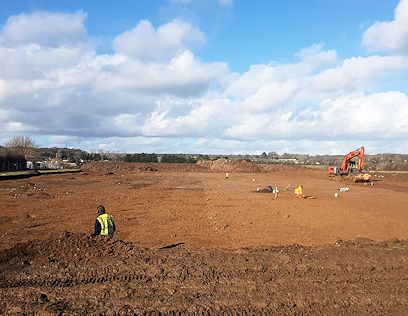
Site: February 2021
Between February and May 2021, Thames Valley Archaeological Services (South) [TVAS] undertook excavations of part of the site south of Water Lane where the construction of houses is due to commence later in that year. Approximately 60cm of topsoil was initially removed to allow the excavations to commence. Their excavations only covered the southern part of the building site, just north of The Spotted Cow PH, where prior geophysical surveys suggested excavations might prove more fruitful. On 24 April 2021, TVAS gave short tours of the site to the public prior to the completion of their work which is anticipated before the end of May. They also exhibited finds to that point in time.

Site: February 2021
TVAS found several rectangular enclosures, as well as trackways, ditches, several pits (some possibly used for storage of grains) and some cremation burials. These were mostly small individual holes although one burial site suggested that it might have been part of a ring gulley cremation site. One large feature identified in the western part of the site has been interpreted as a possible pond. From these features and the artifacts found, TVAS believe that the site was occupied between the late-Iron age and early Roman period, approximately 500 BC to 100 AD.
At least four or five enclosures were identified which appear to represent small-scale agricultural activity as well as livestock management. Two trackways, orientated south-west to north-east (and following the general alighnment of the enclosures), were probably comtemporary.
Other features included a cluster of pits with straight sides and flat bases which may have been used for storage (possibly for grain). One was found to contain a layer of charred seeds near the base and environmental samples will determine what type of plants they came from. Several cremation burials were also uncovered and believed to be from the Iron Age period - these appeared to be buried in a cloth and not in an urn with only part of the cremation pyre residue buried within the ground.
One pit (see photo below) contained fragments of burnt flints. The burnt flints were of interest as it was explained that these were heated and then thrown into small clay-lined pits of water or pots which reached near boiling point, the water being used for cooking. Pottery of the time placed directly onto a fire would have shattered with the extreme heat.
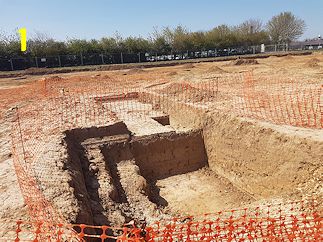 ...
...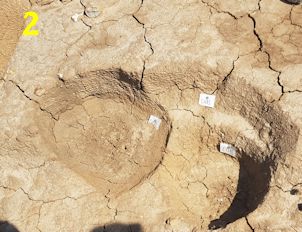 ...
...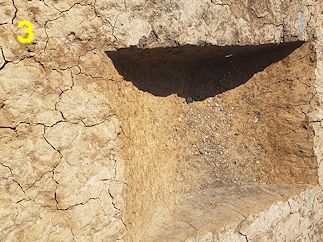
Photos : (1) pond, (2) cremation burials, (3) pit with burnt flints
Among the finds discovered on site were a Neolithic flint axe which was buried in a late-Iron Age or early/Roman ditch where it may have been placed deliberately. Also found in a ditch was a Roman bead fragment made of blue-green glass or glazed ceramic pottery. Other finds included a Roman coin, a fragment of glass from perhaps a small Roman vase/vessel, a metal linchpin or part of a Roman key, part of a stone quern, a spindle whorl, fragments of decorated Samian pottery, and what might have been a whetstone.
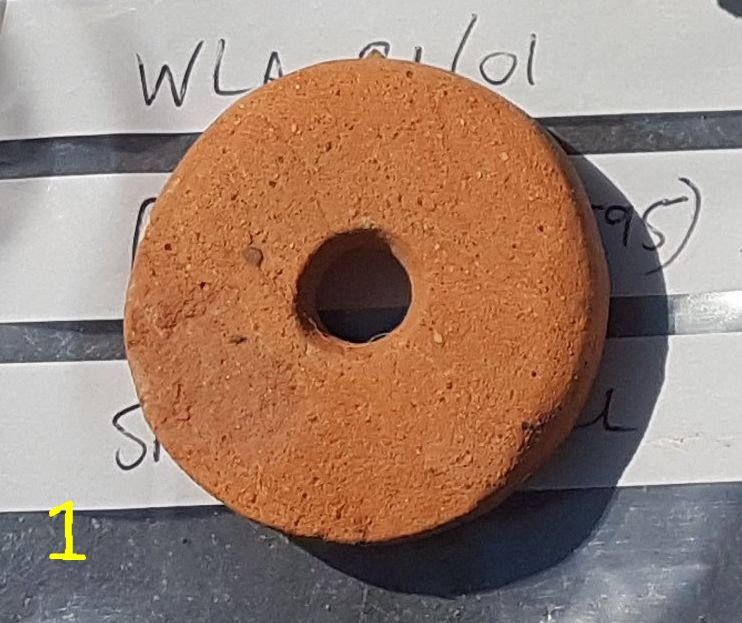 ...
... ...
...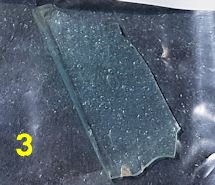 ...
...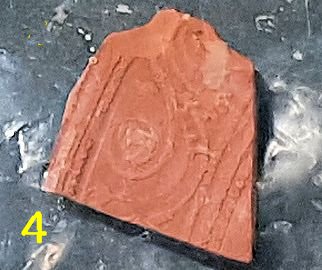
Photos : (1) spindle whorl, (2) axe head, (3) Roman glass, (4) decorated Samian pottery
One of the problems of excavatiing the site was that the soil was brick earth, a particularly difficult medium in which to dig. At the time of writing, the TVAS team had not fully investigated the western part of the site. Some post holes had been found there and it might have been an area of occupation or where there had been one or more barns.
TVAS will eventually issue a much more detailed report of their findings and a link to it will be incorporated here when published. Articles on other Angmering archaeological surveys, including the one about 100m away on the A280 by-pass route carried out in 2001, can be found in the Archaeological Section of this website's History Centre.
Neil Rogers-Davis
First uploaded: 26 April 2021
Acknowledgement: My thanks to TVAS for the tours, the written summary, display of finds, and allowing photography.